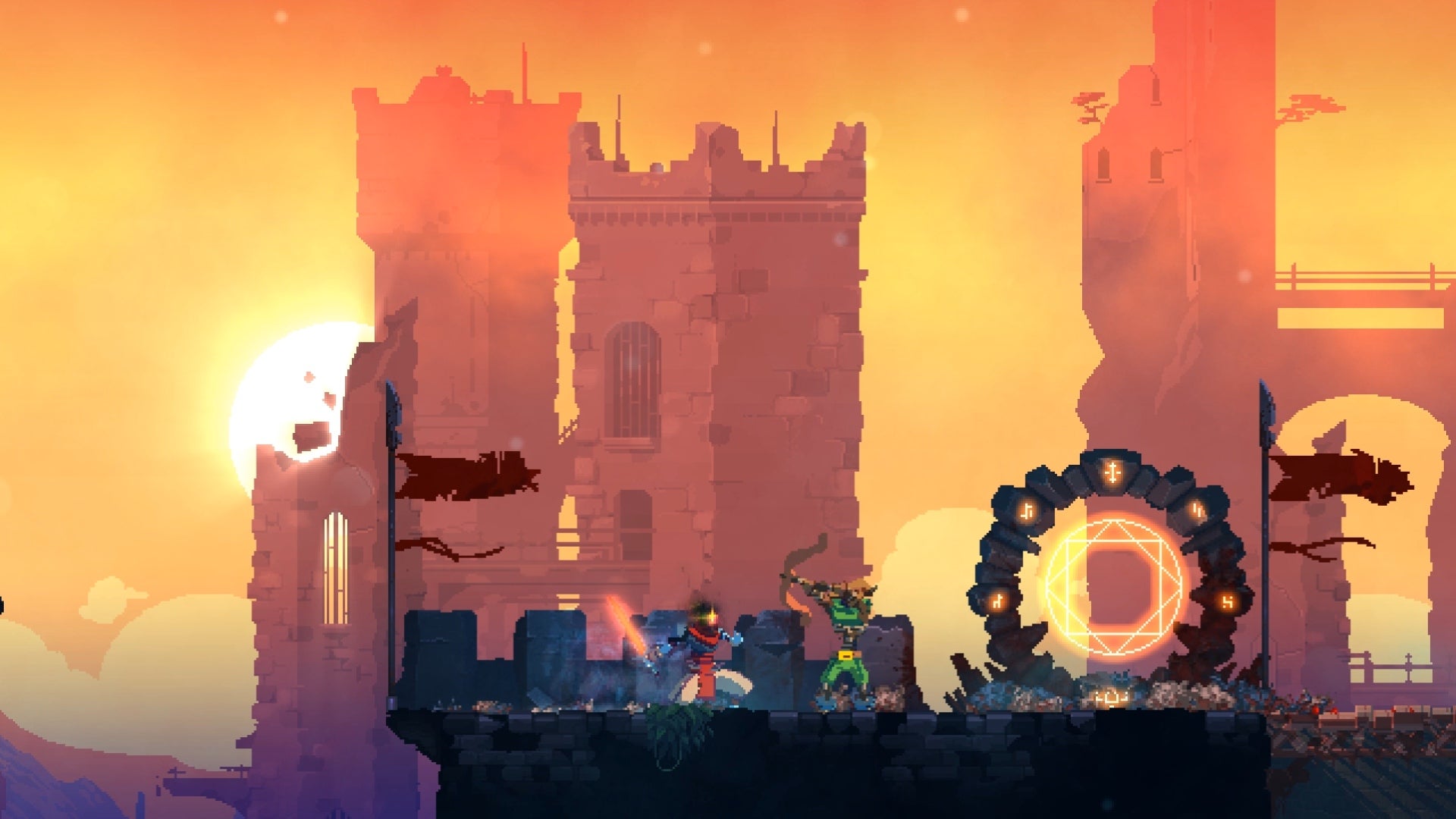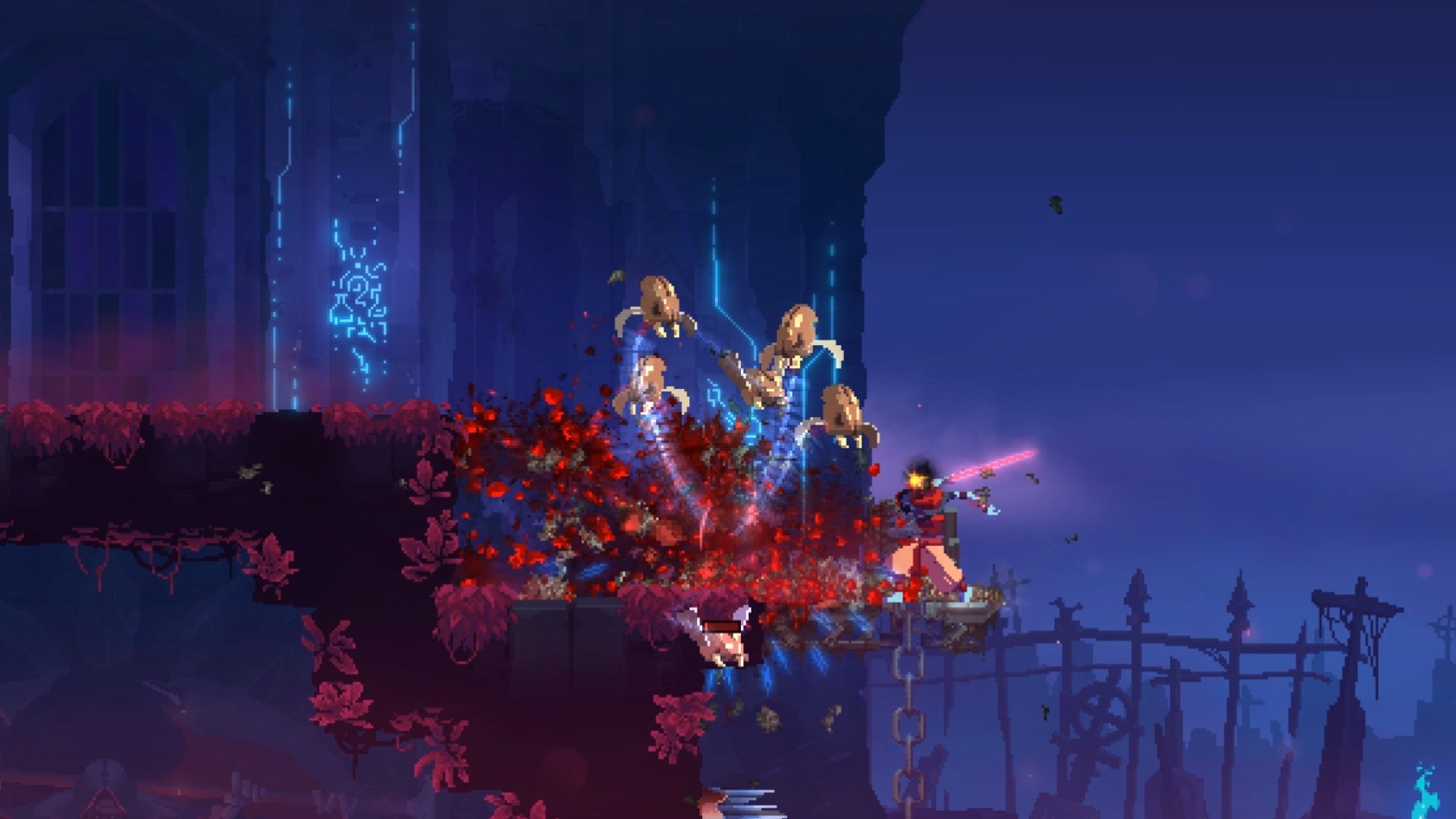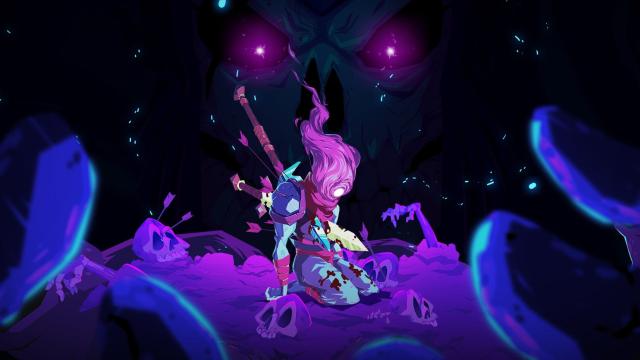I love Dead Cells. The side-scrolling combat and platforming are tight, the art is impeccable, and its progression system and unlock curve are among the best I’ve ever seen. It feels like a near-perfectly designed game. In the three years since its release, it has become even better — and a more interesting indicator of where video games are at as a medium.
Dead Cells was the work of Motion Twin, a French worker co-op based out of Bordeaux. The studio is composed of about 10 people, all of whom share stake and profits in the studio’s success. Upon its initial release, this organizational structure acted as a reminder that hierarchy, in all of its myriad forms, isn’t all that necessary to make a great video game. More recently, sibling studio Evil Empire — a more typical corporation founded by Motion Twin’s former marketing director, took over further development, with Motion Twin still overseeing the game’s overall design direction and creative decisions.
Like its developers, the game itself — also changed dramatically in this time. Dead Cells just released its 26th named update, “Everyone is Here”. Previous updates (including three paid DLCs) have added everything from new skins and room layouts to wholly new gameplay mechanics. The game has also been totally rebalanced no less than three times — including a major revamp of its difficulty curve. It is an update history which rivals and frequently surpasses even “AAA” live-service games.
“Everyone is Here” adds crossover skins and weapons from other indie hits like Hyper Light Drifter, Blasphemous, and Hollow Knight. Having gotten my hands on each of them, while returning to the game for the first time in over a year, I cannot help but be impressed with how it has changed. The Drifter’s Hard Light Sword and Gun are particularly excellent standouts.
Updates have also added a handful of “two-handed” weapons which take up both of your equipment slots. These weapons, unlike everything else in the game, have two distinct movesets and uses. The Hard Light Sword and Gun are my favourite of these two-handed weapons — hell, they may be my favourite weapons period. I will totally abandon my previous build if I find them during the course of a run.

The sword is a competent melee weapon, with a quick attack speed and surprisingly weighty animations, like the sword is desperately trying to carry itself forward with each attack. The gun works exactly like it does in Hyper Light Drifter, marking enemies with its shots and relying on successful melee hits to replenish its ammunition. Each weapon is functional in combat, but proper use requires alternating between the two of them. Enemies marked by the gun take guaranteed critical damage from the sword, creating an incredibly satisfying rhythm to your fights. It feels stellar to fire a handful of shots to mark an enemy while rolling through their attacks, then tearing them apart with the sword.
The two weapons can also be upgraded independently of one another, which lets you reroll your way into a complementary build. For example, in a recent run I managed to roll a Hard Light Gun that poisons enemies on hit, and a Hard Light Sword which dealt bonus damage to poisoned enemies. As ever, the interplay between your weapons, skills, and their unique traits allows Dead Cells to become surprisingly complex despite its relatively simple basic mechanics.
Dead Cells also now allows you to store gear in your backpack, with a handful of mutations to take advantage of this placement. Armadillopack, for example, allows you to parry with a shield in your backpack whenever you roll — which allows otherwise aggressive builds a powerful defensive option. I’ve always been extremely reluctant to use shields in Dead Cells because I prefer more aggressive playstyles. After dozens of hours with the game relying entirely on dodge rolls, the Armadillopack taught me that parries were not only powerful, but that shields were legitimately viable.
Myriad such minor mechanical changes allow for Dead Cells to increase its depth without sacrificing its simple and approachable combat, a design feat the game’s managed to pull off multiple times across its 26 updates.

Nor has the game’s visual design ever faltered across its three DLCs, each of which added new biomes and bosses. Dead Cells is gross. Every enemy lurches, every pipe drips, and every step squelches. When you fling your head from your body it makes a disgusting noise and there’s a quick spurt of green viscera. The game’s newer biomes all retain this sense of grossness and fleeting majesty. You’re walking across the rotting bones of an empire that was repulsive before it fell, and Dead Cells’ incredible art design makes you feel it.
Unlike most frequently updated games, live-service behemoths in particular, Dead Cells has no desire for you to play every day. There are no weekly challenges or time-locked items beyond the highly optional Daily Runs. Dead Cells is satisfied with you experiencing new content when it’s released, only to move on to something else when you’re done. This is why it’s so damn good at selling DLCs. The game constantly reminds you of its excellence through free updates, which all but guarantee you’ll come back for the next DLC.
Dead Cells in 2021 is lonely, wet, and alive. Like the malaise its world is plagued with, the game continues to mutate and shift into ever-stranger forms all the while retaining its original identity. Its business model is in no way sustainable for most independent studios, but seeing this one quiet roguelike transform and writhe over the last three years has been a joy, and gives me some real hope about the future of the medium and the viability of alternate development practices.
Godspeed Dead Cells, I hope you’re even more disgusting (and disgustingly satisfying) the next time I check in with you.

Leave a Reply